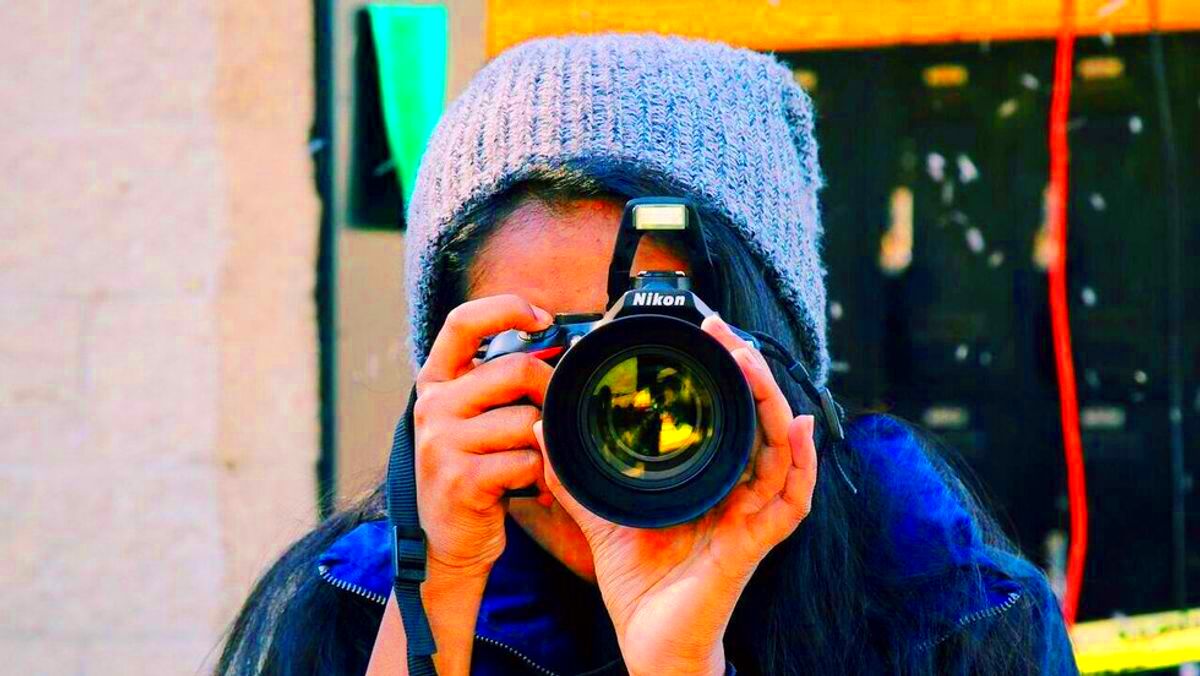Freelance photography offers exciting opportunities for creative professionals looking to work on their own terms. As a freelance photographer, you get to choose your clients, projects, and set your own schedule. This freedom, however, comes with its own set of challenges. From finding steady work to managing your business, succeeding as a freelance photographer requires skill, dedication, and a well-planned approach. If you're passionate about photography and ready to take the leap into freelancing, this journey could be a rewarding way to express your creativity while building a sustainable career.
Understanding the Basics of Freelance Photography

Before diving into the world of freelance photography, it's essential to understand the key basics that will set you up for success. Here are some critical points to consider:
- Photography Skills: A strong foundation in photography is vital. Whether it's portrait, landscape, or event photography, mastering the technical skills is the first step in offering quality work to your clients.
- Business Knowledge: As a freelancer, you're running your own business. This means understanding contracts, invoicing, taxes, and how to set up a proper workflow.
- Networking: Building relationships with other photographers, clients, and professionals in the industry will help you find work and get referrals.
- Equipment: Invest in quality gear. You don’t need to have the most expensive equipment, but having the right tools can make a huge difference in the quality of your work.
Starting as a freelance photographer requires a mix of creative skills and business acumen. Understanding these basics will set the foundation for a successful career.
Also Read This: How to Sell on Fiverr: A Comprehensive Guide
Building a Strong Portfolio as a Freelance Photographer

Your portfolio is one of the most important assets you’ll have as a freelance photographer. It’s your chance to showcase your work, style, and abilities to potential clients. Here’s how to build a portfolio that stands out:
- Showcase Your Best Work: Include only your best and most relevant images. Quality always trumps quantity. Choose photos that highlight your technical skills, creativity, and range as a photographer.
- Organize by Style: If you specialize in different types of photography, consider dividing your portfolio into categories such as portraits, events, product photography, or landscapes. This will make it easier for clients to find the type of work they need.
- Keep It Simple: Avoid clutter. Your portfolio should be easy to navigate, clean, and professional. Don’t distract from the photos themselves with too much text or unnecessary design elements.
- Update Regularly: Make sure to keep your portfolio up to date with your latest work. Regular updates will show that you are actively working and evolving in your craft.
Remember, your portfolio is a reflection of you and your style as a photographer. Spend time crafting it carefully, and make sure it presents the best version of your work to potential clients.
Also Read This: How to Buy Fiverr Reviews: A Comprehensive Guide
How to Find Clients and Get Photography Gigs
Finding clients and landing photography gigs is one of the biggest challenges for freelance photographers. Whether you're just starting out or looking to expand your client base, the key is consistency and networking. Here are some strategies to help you find clients and get hired:
- Word of Mouth: Word of mouth is one of the most powerful ways to gain clients. Provide excellent service and encourage satisfied clients to refer you to others.
- Social Media: Leverage platforms like Instagram, Facebook, and LinkedIn to showcase your work. Regularly posting your best images and engaging with followers can help attract potential clients.
- Online Marketplaces: Websites like Fiverr, Upwork, and Thumbtack allow photographers to list their services and connect with people looking for freelance photographers. Be sure to create a strong profile that highlights your expertise and experience.
- Networking: Attend local events, photography meetups, or workshops. Networking with other photographers and industry professionals can lead to collaborative opportunities and client referrals.
- Cold Outreach: Don’t be afraid to reach out to potential clients directly. Send emails to businesses, event planners, or individuals who might need your services. Be polite and show them how your photography can benefit them.
By consistently putting yourself out there and building connections, you can grow your client base and secure more gigs as a freelance photographer.
Also Read This: How to Generate Views on Fiverr
Setting Your Rates and Managing Your Finances
As a freelance photographer, it's important to set fair and competitive rates while ensuring that you're making enough to support your business. You also need to manage your finances wisely. Here’s how to set your rates and stay financially organized:
- Determine Your Hourly or Project Rate: Research industry standards and calculate your rate based on your experience, skills, and location. If you’re just starting out, it may be best to charge lower rates until you build your reputation.
- Consider Your Expenses: Factor in the cost of equipment, software, travel, marketing, and any other business-related expenses when setting your rates. Make sure your rates cover these costs while leaving room for profit.
- Offer Packages: Offering packages (e.g., one-hour portrait session, full-day event coverage) can help clients understand your pricing better and encourage them to book your services.
- Set Clear Payment Terms: Always outline payment terms in a contract. Decide whether you’ll charge a deposit, when the full payment is due, and if you offer payment plans. Be clear about any late fees to avoid misunderstandings.
- Track Your Income and Expenses: Use accounting software or a simple spreadsheet to track your income and expenses. Keeping a close eye on your finances will help you understand where your money is going and keep you financially stable.
By setting clear rates and managing your finances carefully, you can ensure your freelance photography business is profitable and sustainable.
Also Read This: How Long Until Your First Sale on Fiverr?
Marketing Yourself as a Freelance Photographer
Marketing is key to getting noticed as a freelance photographer. Without an effective marketing strategy, even the best photographers can struggle to find clients. Here are some ways to market yourself and stand out in the crowded photography industry:
- Build a Professional Website: Having a personal website is crucial for showcasing your portfolio, listing your services, and providing contact information. A website makes you look more professional and gives clients a central place to learn about you.
- Utilize Social Media: Social media is a powerful tool for freelance photographers. Platforms like Instagram, Pinterest, and Facebook are ideal for posting high-quality images and building an audience. Make sure to use relevant hashtags and engage with your followers to build a community.
- Content Marketing: Start a blog where you share photography tips, behind-the-scenes stories, or client features. This will not only showcase your knowledge but also improve your SEO (search engine optimization) so clients can find you easily online.
- Collaborate with Other Creatives: Work with other freelancers, such as wedding planners, event coordinators, or stylists. These collaborations can lead to more exposure and client referrals.
- Offer Promotions or Discounts: Consider offering limited-time promotions or discounts to attract new clients. For example, you might offer a discount on your first portrait session or bundle services together for a special price.
Marketing takes time, but with consistent effort and a clear strategy, you’ll be able to attract the right clients and grow your freelance photography business.
Also Read This: Is Fiverr Bad for Artists?
Common Challenges for Freelance Photographers
While freelance photography can be incredibly rewarding, it also comes with a set of challenges that can test your skills and resilience. Understanding these challenges early on can help you prepare and navigate them effectively. Here are some common struggles that many freelance photographers face:
- Inconsistent Income: Unlike a salaried job, freelance photography doesn’t offer a guaranteed paycheck. Some months may be busy with multiple gigs, while others might be slow. Learning to manage fluctuating income is key to staying financially stable.
- Finding Clients: Building a client base takes time, and it can be tough in the beginning. Constant networking, self-promotion, and delivering great work to clients are crucial to attracting new business.
- Managing Time: Freelancers are responsible for all aspects of their business. From shooting and editing photos to handling marketing, emails, and finances, it can feel overwhelming. Time management skills are essential to stay on top of your workload.
- Dealing with Competition: The photography industry is competitive, with many talented professionals offering similar services. Finding a unique style, specializing in a niche, and continually improving your skills will help you stand out.
- Marketing and Branding: As a freelancer, you're not just a photographer; you also need to be a marketer and businessperson. Creating an effective marketing plan, building a brand, and keeping up with trends can be a challenge for creatives who prefer to focus on their craft.
While these challenges are real, with the right approach and perseverance, they can be overcome. It’s all about staying focused on your goals and finding effective ways to manage these obstacles.
Also Read This: How Does Fiverr Work? Insights from Reddit
Frequently Asked Questions about Freelance Photography
Here are some common questions that aspiring freelance photographers often ask:
- How do I get started as a freelance photographer? To start, focus on building your portfolio, setting up a website, and networking with potential clients. Start small, gain experience, and gradually increase your rates as you build a reputation.
- Do I need a business license to work as a freelance photographer? The requirements vary by location. In some areas, you may need to register as a business or obtain a license. It's essential to check local laws to ensure you're operating legally.
- How much should I charge as a freelance photographer? Your rates depend on your experience, location, and the type of photography you specialize in. Research what others in your area are charging and consider your expenses when setting your rates.
- How can I attract clients? Focus on building a strong online presence through social media and a professional website. Networking, word-of-mouth referrals, and showcasing your best work in portfolios can also help attract clients.
- How do I deal with difficult clients? Set clear expectations with your clients, communicate openly, and always have a contract in place. If a client becomes difficult, try to stay professional and find a compromise, but know when to stand firm on your policies.
By understanding these common questions, you can approach your freelance photography career with more confidence and clarity.
Conclusion: Key Steps to Succeeding as a Freelance Photographer
Becoming a successful freelance photographer requires more than just technical skills behind the camera. It takes a combination of creativity, business savvy, and persistence. Here are the key steps you need to follow to succeed:
- Develop Your Photography Skills: Constantly work on improving your technical and creative abilities. The better you are at your craft, the more clients will be drawn to your work.
- Build a Strong Portfolio: Showcase your best work and keep your portfolio up to date. Make sure it reflects the type of photography you want to do professionally.
- Network and Market Yourself: Take the time to network, both online and offline. Marketing your services on social media, websites, and local events can help you build connections and attract clients.
- Set Clear Rates and Manage Your Finances: Be sure to set competitive rates and track your income and expenses. Proper financial management ensures your business stays profitable.
- Stay Organized and Consistent: Stay on top of your schedule, client communication, and business tasks. Consistency in your work and business practices will lead to long-term success.
Success as a freelance photographer doesn't happen overnight, but with dedication, strategy, and the right mindset, you can build a sustainable career that allows you to enjoy the creative freedom of freelancing.




